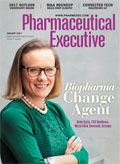Biopharma Change Agent: Belén Garijo
Pharm Exec speaks with Spanish-born Belén Garijo, CEO of Merck KGaA, Darmstadt, Germany’s healthcare business, who shares her steady-eyed approach in transforming a traditional pharma unit focused on small molecules for chronic disease to a high-tech specialty producer of immunotherapy drugs for rare cancers.
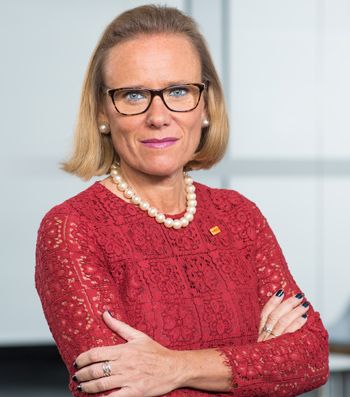
Belén Garijo, CEO of Merck KGaA, Darmstadt, Germany’s healthcare business, shares her steady-vision strategy in transforming a traditional pharma unit focused on small molecules for chronic disease to a high-tech specialty producer of immunotherapy drugs for rare cancers
In conversation, Belén Garijo does not miss a beat. Behind those practical but stylish glasses is a woman with a sharp eye-an eye that travels-observing, processing, and always staying one step ahead of the next question. The impression the 56-year-old physician gives to a visitor ranges from curiosity to empathy to decisiveness. These are character traits that fit well with the mandate she holds as a change agent, responsible for repositioning a traditional pharma business centered on small molecules for chronic disease to a high-tech specialty producer of immunologic drugs that represent the future of treatment for rare cancers. Joining Merck KGaA, Darmstadt, Germany in 2011 to lead commercial operations for the Biopharma business, of which Garijo was tapped to be CEO in 2013, she then became the CEO of the overall healthcare business later that year, succeeding Stefan Oschmann, who is now Chairman of the Executive Board & CEO of Merck KGaA, Darmstadt, Germany. Garijo is responsible for nearly two thirds of annual Group turnover, and sits as one of six members of the Group’s Executive Board.
Garijo summarizes her task with a simple missive: To be first in disease. And to be first to market. There is also a daunting metric laid down by her boss, Executive Board Chairman Stefan Oschmann, to generate $2 billion in new sales over the next five years, mostly from the output of a novel immuno-oncology partnership forged with Pfizer in 2014. That growth must be secured in the midst of a deepening skepticism among payers that new entrants to this increasingly crowded therapeutic field are differentiated enough to justify a premium launch price. It’s an argument about creating a common language on value-can this multilingual advocate for innovation make the case?
In an interview last month with Pharm Exec at Merck KGaA, Darmstadt, Germany US Healthcare headquarters at EMD Serono in Rockland, MA, Garijo holds forth on how the trust of mentors overcame some early resume gaps; the “no rule book” standard for tackling culture conflicts in M&A; lessons from repositioning a conservative R&D organization to take the risks required for breakthrough innovation; and rejecting the notion that women executives, unlike men, must choose between family and career-it’s a myth, she says, a bind on the potential from thinking forward. Here are excerpts from our conversation.
PE: Your career has been focused on the intangibles around business transformation: leading the integration of large organizations, often with markedly different cultures, and moving them to embrace a new way of relating to products, customers and patients. You are also a physician with a strong bias toward professionalizing the practice of medicine. What lessons have you learned from prior assignments at Abbott, Aventis, and Sanofi and how do you apply them in the context of your current role as one of the most senior women line executives in the industry?
Garijo: I must be honest. My early goals in life had nothing to do with business. I am surprised where I am today, as a global line executive responsible for a $7.7 billion P&L business with operations in 56 countries. I wanted to serve the community as a practicing physician, where I grew up in a small city in southern Spain. I received my medical degree and spent six years tending to patients in clinical pharmacology and internal medicine, where the powers of observation, good judgment, and personality count and you have to improvise a lot.
Still, for me, a life in the clinic was confining and lacked potential for professional growth. An opportunity arose to join Abbott, as medical director for its Spanish affiliate. I took the position because I recognized this function was important to the industry’s future, as stakeholders embraced the medicalization of information in approving drugs for patients. Abbott ended up bringing me to its Illinois HQ, where I was exposed to a diversity of experiences that launched me into the position I hold today.
It was a risk, both for me and for the company, which assigned me an international medical affairs portfolio without any obvious credentials that qualified me for the role. Abbott enabled me to shift from an individual practicing physician, reliant on other people’s innovative ideas for new medicines, to a member of a large R&D team responsible for those ideas in the first place.
One lesson I draw is how much my career has been shaped by people who trusted me more than I was prepared to trust myself. Opportunities arose despite lacking the experience normally associated with the job. For example, trust from others helped me make the second major transition in my career, moving from the medical/R&D function to the commercial side of the business. I had the good fortune to benefit from superiors who acted on hunch and instinct to
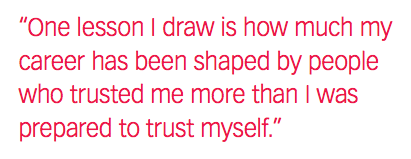
see beyond the narrow parameters of the job description. My mentors shared a trait in pursuing a personalized view of the world, allowing my own profile to define the job instead of the other way around. They were disruptors in choosing people whose lack of experience predisposed them to act differently.
I follow this precept now that I am responsible for talent development for 20,000 colleagues in the Group’s healthcare business. I want them to benefit from that same open mindset in evaluating potential. Taking a chance on someone is inherently good. How else can a company break the mold and adapt to the changes that now demand an entirely new approach? You can’t follow a prescriptive path to finding good people in an industry where success is so often circumstantial.
PE: You are from Spain, obtained your first significant assignment in Chicago, and held senior roles in a company-Sanofi-Aventis-that evolved as a hybrid of German and French management with a touch of US entrepreneurial spirit, at Genzyme, where you oversaw that company’s integration with Sanofi. Has the experience made you believe that culture is a defining characteristic of organizations today, or in this era of globalization, is it that all organizations are more or less alike?
Garijo: If your business follows opportunities across regions and markets, then you have to create a culture that unleashes the positive potential of diversity and inclusion. We are an industry highly dependent on human capital. Setting a distinctive culture with strong input from the top tier of management is critical to molding that capital in a productive way-one that bridges the differences induced by geography, demographics, and business practices, reinforced by social values and traditions. Culture is essential when you consider the fundamental fact that tactics that make for success in the US are not necessarily going to deliver the same results in China.
Hence, few people believe that a strong, distinctive company culture doesn’t matter in an industry as globalized as biopharma. My ascent in management is due to having lived and worked in so many different countries, where I was able to experience how to execute priorities, adjust my communication style, and to lead and inspire teams to do their best for the company. One of the hardest tasks in working within a strong cultural mindset is to execute well locally while retaining a global perspective on the big strategic issues. You have to maintain a balance between these two, often conflicting impulses. What will require global engagement and where will a local focus prove optimal? The best managers in biopharma learn how to create this context early on, which then trickles down through the ranks. That’s how culture makes a difference.
PE: Do you believe that women managers are more sensitive to the importance of company culture than their male counterparts?
Garijo: Women tend to see the issue of culture from a more personal perspective, because women managers-more than men-evaluate family obligations against the day-to-day requirements of their job. This dimension underscores the cultural aspect of living in two worlds. It’s often said that only women executives are obliged to make “choices” between children, family, and their career.
Speaking for myself, I think that view is exaggerated. I work hard to bring other women into senior jobs in the healthcare business, yet I find it a challenge because I see these very women expressing regret that, ”if I follow this path, I will have to forego my family.” I’ve heard the remark so many times and I make it an obligation to show that making such an either/or choice is unnecessary. I worried about this at various stages of my career but in the end, my fears proved false. One reason is our company has embraced technology as an internal communications tool. It makes everyone more mobile and employees with children are key beneficiaries-working remotely when necessary is easier than ever.
PE: You have been assigned key leadership roles directing the merger of Aventis and Sanofi operations in Spain, the JV combination between the MSD and Sanofi-Pasteur vaccines businesses, as global integration leader for Sanofi’s acquisition of Genzyme, and, currently, as the senior executive responsible for the oncology development partnership with Pfizer. What insights can you share on creating these combinations and managing them successfully?
Garijo: The most important goal in any integration is delivering on the hard objectives-and the essential ingredient is figuring out the “how.” The way to do that is adopting a highly inclusive style of leadership, on both sides, which begins with securing a reputation as a good listener. It is also important to remain focused on the ultimate objective in combining the two companies. This involves thinking above and beyond the tactical element of finding synergies, like reducing costs.
Another key task is distinguishing between short-term goals and what you must do to position the combined business for success over the long-term. For the latter, a three-year, step-by-step road map has to be put in place very early in the process. This evaluation has to include a strong commitment to culture change-without that, delivering on the original promise behind the deal will be harder to achieve.
I learned this the hard way, when I worked for Aventis as general manager in Spain while it was being acquired by Sanofi. I was chosen to lead that process, requiring me to scuttle my own business plan and priorities to conform to what Sanofi wanted from the integration of our two operations. I had to abandon several local product launches and take the painful step of moving our offices from Madrid to Barcelona, a “mission impossible” process virtually unheard of in Spain, with its pronounced regional identities. In addition, I had to lead a management committee composed of two sets of executives used to operating in distinctly different cultures. My Aventis colleagues worked in a decentralized environment with a lot of local autonomy, while the Sanofi people were very buttoned up and expected to be guided from the top.
Sitting at the table in front of these people forced me to change. I had to create a sense of balance and to accomplish that I put an unrelenting focus on the need to make a fresh start. Together, we had to reinvent all the rules, so instead of perusing all the management manuals we devised a simple question to benchmark our progress: will this action create or add value to the combined company? If it did, we did it; if it did not, we went in another direction, even if in doing so it required a cultural adjustment, on either side.
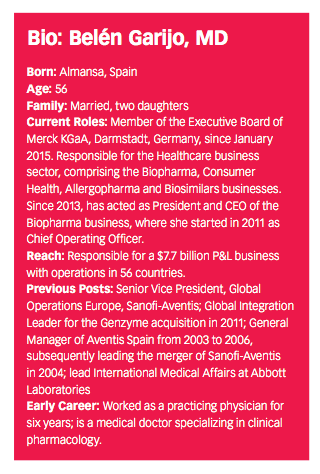
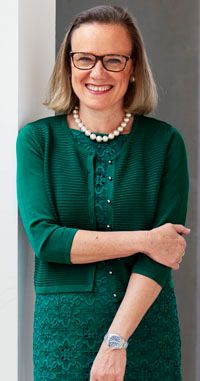
PE: What about your experience in leading the Sanofi Genzyme combination? The deal sparked criticism from investors because the big pharma culture of Sanofi was perceived as a drag on the characteristics that made the Genzyme business so attractive.
Garijo: We carried an advantage in that case. There was a firm consensus at Sanofi to preserve the independence and entrepreneurial culture at Genzyme. The word came down from the Board: no “sanofizing” Genzyme. Hence, we had a clear assignment to protect and preserve the culture of Genzyme within the larger organization. In fact, we went beyond that and helped drive a new business model for the combined company, founded on what at the time was Genzyme’s unique “patient-centric” approach to the customer. It remains the motivating principle behind all of Sanofi’s stakeholder relationships today.
PE: What about the acquisition of the Swiss biotech Serono? Was the motive similarly straightforward?
Garijo: I joined Merck KGaA, Darmstadt, Germany as chief operating officer for the biopharma business, after the integration with Serono. I discovered no real integration of these two family-owned businesses had taken place. Serono remained at its former HQ in Geneva; many executives continued to act as if it was still independent. This mindset needed to end, which we accomplished by pulling out of Geneva and redistributing resources to our R&D facility here in Massachusetts. It was another example of fostering a necessary change in culture, emphasizing our tilt to a global, US geographic focus. Closing Geneva, thus, had little to do with just cutting costs.
PE: You joined Merck KGaA, Darmstadt, Germany in 2011, taking a series of assignments that have also been transformative for the company. How has the Group changed in the past five years?
Garijo: Merck KGaA, Darmstadt, Germany at that time was at an inflection point: in 2011, we confronted a crisis with the regulatory authorities in the US and Europe declining to approve cladribine, a key successor drug to Rebif in our MS pipeline. Management had to acknowledge that the company was faltering on the innovation, clinical development, and regulatory affairs fronts, not having introduced a patent-protected medicine in more than a decade.
When a big dream disappears, the consequences can clarify the mind-and that’s what happened here. I was tapped to lead the healthcare division, which was, and, at 65% of total Group revenues, remains the largest of our three global businesses. My mandate was to return to the fundamentals: commercializing patent-protected medicines on diseases for which there are few equivalent treatments. The design was to move from being a supplier of
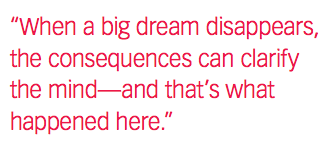
traditional pharmaceutical and chemical products, operating mainly in Europe, to a global company centered on innovative science and technology.
The early phase of this transformation focused on operational efficiencies. But we’ve moved well beyond that to create an entirely new business model, with an emphasis on high value specialty drugs for complex conditions like cancer and various immunologic disorders. In that sense, we’ve moved away from small molecule medicines in primary care, characterized by low margins and generic competition. As a company with deep roots in Germany, where we were founded almost 350 years ago, our sales were over-weighted to the region’s low growth cycle, so we decided to pivot to North America and the emerging countries. More than a fifth of our revenues now come from the US, a market that is central to the Group’s future.
All of this is framed in a strategic plan we call “Fit for 2018.” It has put us on track to a different product portfolio as well as a different geographic reach. Our healthcare business is less dependent on Germany and Europe while the product portfolio has broadened beyond our traditional MS franchise to include products in the most promising therapeutic segments, including next generation immuno-oncologic drugs and combinations and in immunology. We are also expanding our base in fertility treatments, a patient- sensitive business where we benefit from decades of expertise.
PE: What’s the current state of progress toward “Fit for 2018?”
Garijo: We have completed work on the operational overhaul of the business and are well along in the growth phase, which involves launching new products, including the results of our novel oncology partnership with Pfizer. We’ve successfully introduced a new commercial operations model built around a smaller, more specialized and “high touch” sales force. We have reinvigorated our core franchises, in MS and fertility products, aiming to make these global products, with a pole position in all the major markets but especially the US. We are filing again for EMA approval of our investigational compound cladribine and are looking to do the same in the US.
Innovation is a second element in Fit for 2018’s grow-the-business phase, where we intend to establish ourselves as a leader in specialty medicines for rare and complex conditions like cancer. This required a substantial overhaul of R&D, accomplished in a restructuring we completed in early 2015. More productivity from existing resources was our aim, combined with placing us as partner of choice in in-licensing drugs or leveraging internal assets we could not commercialize on our own.
It started with an extensive pruning of our product pipeline, a high stakes gamble in which we eliminated nearly all that we had in late-phase development while accelerating discovery work in three therapeutic areas: oncology; immuno-oncology; and immunology. The centerpiece of this new strategy is our investigational compound avelumab, the key product in our partnership with Pfizer, with potential indications-as monotherapy or in combination-for a wide range of cancers and tumor types.
The third priority is upgrading regulatory and development capabilities to boost our standing with the FDA. Progress to this objective has been facilitated by the expansion of our R&D presence in the US. The Geneva closure gave us the leeway to recruit more talent here in the US. Half of our regulatory and drug development teams now consist of experts we have attracted from outside. We’ve kept all the talent we had on the discovery side. It has given us opportunity to shake up the innovation process and reinvigorate the pipeline, which I believe is better than anything we have seen in the company before.
PE: Is it fair to say avelumab is the inflection point of the “Fit for 2018” strategy?
Garijo: I would say it symbolizes our progress in repositioning the business around patient centered, breakthrough innovation. Avelumab was developed here, in-house; we brought it forward to Phase I. But as we saw its potential, we also knew we lacked the size, scale, and presence to reap that potential on our own. In recognizing avelumab as an important product, Pfizer has ratified our company’s emergence as a player in oncology, particularly in the competitive US market. That’s a game changer for us. It also freed up internal resources that we could devote to the parts of our pipeline outside oncology. And, to be sure, we have other assets besides avelumab.
PE: Can you summarize the current state of the partnership with Pfizer? How are decisions made by the two parties?
Garijo: Right now, we have nine pivotal trials underway and 30 clinical programs in multiple indications and tumor types. Avelumab, our anti-PD-L1 antibody, has been accepted for review for a marketing authorization by the FDA and the EMA, as a treatment for Merkel cell carcinoma, a very aggressive form of skin cancer. Regulators have granted breakthrough therapy designation, which means a fast-track status to our applications, and we expect decisions by the agencies later this year.
Beyond this, we are collaborating with Pfizer on more than 30 different investigational programs, including the following cancer types: non-small cell lung cancer; renal cell carcinoma; bladder cancer; third line gastric cancer; ovarian cancer; and squamous cell carcinomas of the head and neck. Each of these represent cancers with few alternative therapies-the unmet medical need is great. We also have a co-promotion program in the US and other countries with Pfizer for Xalkori, launched by Pfizer in 2011 for treatment of ALK-positive metastatic non-small cell lung cancer.
The goals are ambitious, but we are pursuing them as a marriage of equals: it’s a 50/50 allocation right down the line, from development to commercialization. There is a global Executive Committee that decides, with members divided equally between both companies. Discussions are open and each participant is free to bring his or her own ideas to the table. We are looking for exposure to as many sources of expertise as we can manage.
PE: Is the partnership focusing on potential post-approval issues, such as strategies on market access and pricing? Are you building a value proposition with appeal to payers? Or is this handled separately?
Garijo: We are very attentive to this area. In fact, I met [recently] with the US commercial and medical teams to underscore the importance of working with stakeholders to communicate our value platform to payers, oncologists, and patients on avelumab as well as the investigational drug M7824, a potential first-in-class bifunctional fusion protein therapy, which is a new approach to immunotherapy beyond the current class of checkpoint inhibitors. All of us are aware that a tolerable risk-benefit profile is not enough to drive market uptake. It has to be accompanied by proof that the incremental value of the product is significant in terms of patient outcomes. That has to drive our entire approach to product development in the US, which is a proxy for the rest of the world, too.
One thing that concerns me is silo thinking between the development teams, which focus on risk-benefit, and the market access teams, which often intervene very late in the journey to registration. I am pursuing a single integrated strategy, with a team responsible for considering risk-benefit and value simultaneously; relying on the best and most novel approach to evidence we can muster. We intend to prove this model on the M7824 compound because of its possible potential as a curative tool in cancer immunotherapy.
PE: One part of your functional portfolio is leading the Merck KGaA, Darmstadt, Germany’s reputation enhancement efforts. What benchmarks can you cite here?
Garijo: I take this commitment seriously. Together with my colleagues on the Executive Board, I took the initiative to create a separate, dedicated Access to Health (A2H) unit that works across the company to bring more of our medicines forward to the patients who need them. Our work has been rewarded by the independent Access to Medicines Foundation Index on industry performance in promoting access, where we rank fourth among the 20 largest global biopharma companies surveyed. Given our smaller P&L footprint relative to the others in the list, we are definitely punching above our weight on this issue.
In a larger sense, it’s important to stay vigilant and recognize how important industry self-regulation through various codes of conduct is to preserving our global license to operate. Our business practices are rigorous and well recognized by our customers, in all markets and geographies. Nevertheless, from an industry-wide perspective, we must be more proactive in presenting the value our products bring to society. The present industry effort around the value argument is not sufficient for the long-term. Our company carries a unique advantage here in moving the industry forward. As a family-owned and family-oriented enterprise, corporate responsibility is a given: it remains integral to our priorities on the business side. There can be no separation of the two.
PE: To conclude, how will you measure success as you lead the Merck KGaA, Darmstadt, Germany’s healthcare business in 2017?
Garijo: Our success will be measured by how well we execute on our strategic priorities to deliver $2 billion in incremental sales by 2022 and the successful launch of the drugs currently in our pipeline. At the end of the day, it is the way we manage these that will decide on the speed and volume that we can provide patients with access to these drugs. We expect the first launch of avelumab in 2017, followed by additional launches each year after 2017 through 2022. Also, our ambition is launch cladribine in Europe and to file in the US, which will hopefully be followed by other promising compounds in the pipeline outside the
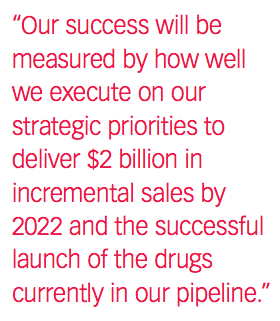
oncology space. In addition, expect to see the fruits of our special expertise in combining drugs with devices from other parts of the business to create intelligent delivery solutions for patients.
At the same time, we want access to the best external innovations to fuel our discovery engine through creative approaches on in-licensing. I point to our new agreement with Intrexon, a US leader in synthetic biology, to share expertise in CAR-T technology applications geared to expanding the treatment pathways in immuno-oncology.
Other platform-partnering projects are underway with two US-based biotechs, Mersana Therapeutics and Sutro Biopharma, to develop next-generation antibody drug conjugates to fuel early-stage discovery and preclinical development activities. Our goal is to be either first in disease or indication to bring innovation to patients in need; this will be our key measure for 2017 and beyond.
William Looney is Pharm Exec’s Editor-in-Chief. He can be reached at williamplooney@gmail.com
